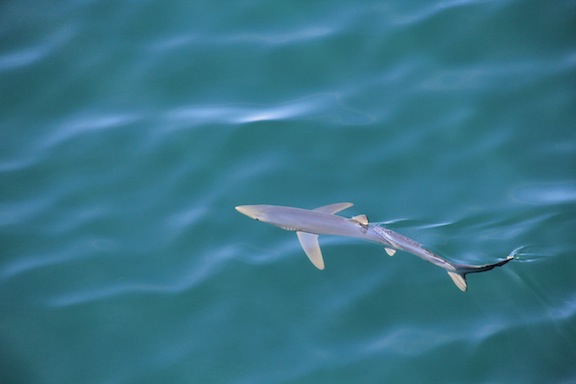Blue Shark (Prionace glauca)

Blue sharks are a pelagic species that can be found worldwide in both tropical and cold temperate latitudes and are one of the most common pelagic species in the world. They are extremely migratory, traveling in search of denser areas of food and mates, and can make trips across the entire ocean throughout their lifetimes – a trip made easier by the large pectoral fins on either side of their body that they can use to ride ocean currents. They are named for the unique color of their skin and can grow up to 3 meters in length. Their diet generally consists of other smaller pelagic species, like fish and squid, and they regularly dive deeper to hunt. When they mate, the litters can contain more than 100 pups. Blue sharks are rarely a danger to humans, and incidents of shark attacks from a blue shark are incredibly infrequent.
They have been seen often during ROV descents, particularly at the near-surface float of the Oregon Offshore deep profiler mooring. Presumably attracted to the lights and electrical signals of the ship and ROV, it is unknown whether or not there are many sharks in the area, or if we are encountering the same resident sharks on every visit.
References:
Stevens, J. (2005). The IUCN Red List of Threatened Species. Retrieved November 27, 2021, from https://www.iucnredlist.org/species/39381/10222811.












